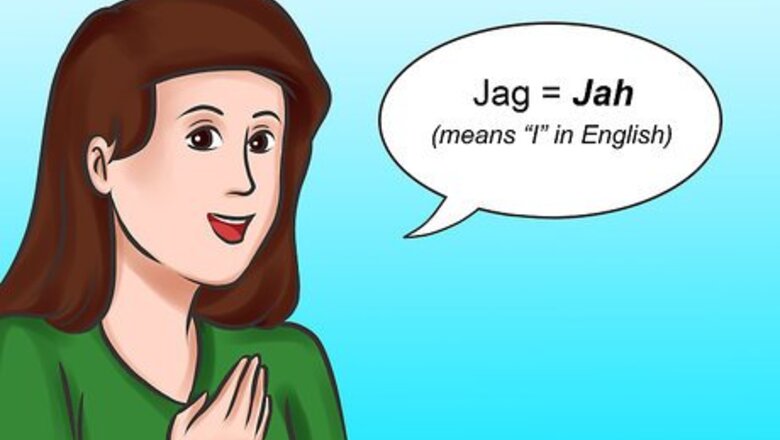
views
Learning "I Love You"
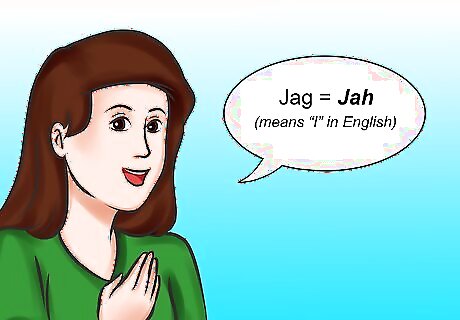
Say "Jag." This word is the subject form of the first-person pronoun (or, in English, "I"). Swedish grammar isn't exactly the same as in English, but for this phrase, the words are in the same order as in "I love you," so "I" goes at the beginning. "Jag" is pronounced roughly like "Jah." Note that the g is silent — the word isn't pronounced "jog." Some Swedish speakers pronounce this word with a Y sound ("Yah") because of their regional accent. Whether you use a J or a Y sound is a matter of personal preference.
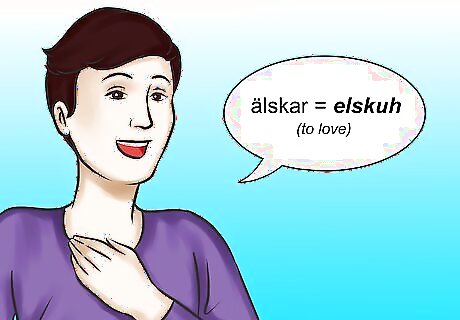
Say "älskar." In Swedish, this is the present-tense verb form of "love". It is made by adding an r to the end of "älska" ("to love"). This word can be tricky for non-Swedes to manage. Roughly, it is pronounced "elskuh." The letter ä sounds like the 'e' in "fell" (though, in some dialects, it sounds more like the 'a' in "hang"). The r at the end is more or less silent — if you pronounce it, it should be very light and delicate.

Say "dig." This word is the object form of "you". Don't be fooled by the way this word is spelled. "Dig" is pronounced almost exactly like the English word "day." It shouldn't sound like the English verb "dig" at all.

Combine the words into one phrase: "Jag älskar dig." Practice saying each word individually until you're confident with all three. When you're ready, put them together. Saying these words in order will give you the Swedish phrase for "I love you." The entire phrase is pronounced as roughly "Jah elskuh day." Don't forget that you can also use a Y sound for the first word, giving you "Yah elskuh day."
Learning Related Romantic Phrases

Say "Jag älskar dig med" for "I love you too." Use this phrase when someone tells you "Jag älskar dig" and you feel the same way. "Med" can be used as the preposition "with" in other situations, but here it means "too" or "also." "Jag älskar dig med" is pronounced roughly "Jah elskuh day mah." Note that the first three words are exactly the same as in the section above. "Med" has a silent d and uses a short a sound (like the a in "apple"). It sounds like the word "mad" with the d removed.

Say "Jag är kär i dig" for "I'm in love with you." Just like in English, the meaning of this phrase is slightly different than "I love you." You can love close friends, family members, pets, and even objects, but if you're in love with someone, it should definitely be your romantic partner. This phrase is pronounced "Jah eh SHAAAHD ee day." The letter k has "sh" or "ch" sound when used before some vowels. The r at the end of "kär" has a sound like a light d (almost like an r in Spanish). Finally, note that "kär" is emphasized and pronounced for longer than the other words. This is important — in Swedish the length of the sounds you make in a word can be part of its proper pronunciation.
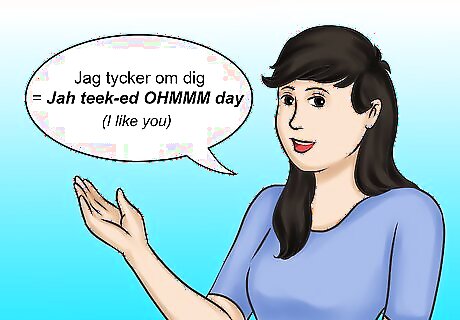
Say "Jag tycker om dig" for "I like you." If you enjoy the time you spend with someone but you're not ready for romance, use this phrase. It carries much less weight than saying you love someone. This phrase is pronounced "Jah teek-ed OHMMM day." Here, again, the r gets a light d sound made by flicking the tongue against the roof of the mouth. "Om" uses a long o sound as in "blow." The word sounds just like the "ohm" sound made by people who are meditating. Stress this word and hold it for slightly longer than the others. If someone says this to you, you can use "Jag tycker om dig också" to say "I like you too." This is pronounced the same except for "också," which sounds like "oak-soh."

Say "Jag längtar efter dig" for "I long for you." If you want to impress your romantic partner with a flowery Swedish compliment, try this phrase. It's not the sort of thing you might here Swedes say every day, but it can make a striking impression when used wisely. This is pronounced "Jah LAANG-tahd efteh day." The ä in "längtar" gets a long a sound (as in "ray"). Stress the first syllable of "längtar" and hold it for longer than the others.
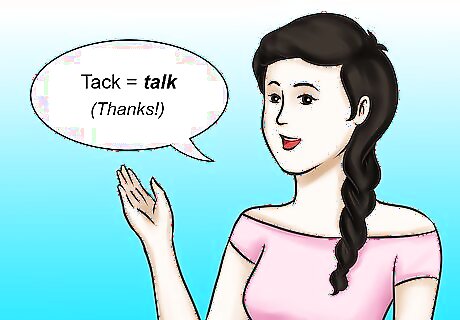
Say "Tack" when you are complimented. Though Swedes generally consider it consulting to give lots of insincere compliments, you're bound to receive at least a few if you're dating. When you do, you can respond politely with "tack!" ("thanks!") This word is pronounced similarly to the English word "talk." Don't stretch out the "ah" sound like is common in some English dialects. The word is a single quick, crisp syllable.
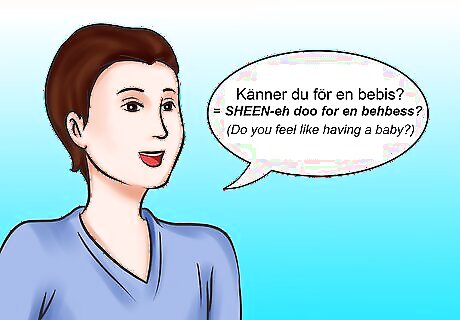
Say "Känner du för en bebis?" to ask if someone wants a baby. The rough translation here is "Do you feel like having a baby?" Use this phrase with caution! You'll only want to pull it out when it's clear you're going to be with someone in the long term (or if it's clear you're joking, of course). This is pronounced "SHEEN-eh doo for en behbess?" Don't forget to stress the first syllable of "känner," which is pronounced with a short e sound (as in "red").












Comments
0 comment